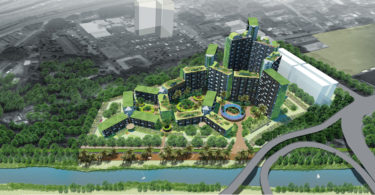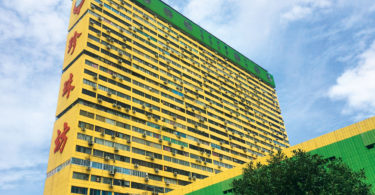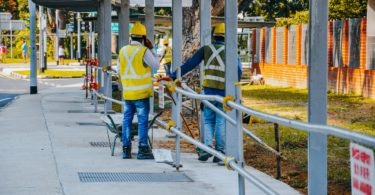“The construction industry has been and will continue to be a main driver of economic growth in Malaysia, especially with major infrastructure projects in the pipeline. However, falling oil prices and higher costs result in less favourable market conditions, which may pose challenges for the industry and lead to budget cuts and decline in government expenditures. Some initiatives have been introduced to help the sector cope with such challenges and increase productivity. In this section, we interviewed three influential panellists—Khalil Adis (KA), Foo Chek Lee (FCL) and Abdul Fadhli Zil Ikram Bin Dzulkifly (AFZ)—who shared their insights on these issues faced by the construction industry.”

Since the Budget 2016 affirmation in January 2016, how has the construction industry been faring up till now in terms of growth? You may present your insights and observation in statistics if they are available to you.
KA: The construction industry will be driven by key infrastructure projects with strong economic multiplier effect to benefit the local economy, and indirectly, Malaysians. MIDF Amanah Investment Bank Bhd (MIDF Research) noted that under the 11th Malaysia Plan (11MP), the construction industry will contribute up to 5.5 percent of gross domestic product (GDP) to the economy by 2020. It will also have a two-times multiplier effect, with more than 120 industries depending on the construction sector for their growth. There are various key infrastructure projects that will drive the industry and economy forward—Light Rail Transit Line 3 (LRT3); Klang Valley Mass Rapid Transit (KVMRT) Line 1, Line 2 and Line 3; Pengerang refinery and petrochemical integrated development (RAPID) project in Johor; and the high-speed rail projects.
FCL: The total value of construction work done in the first quarter of 2016 recorded a growth of 11.1 percent year-on-year to a record RM31.9 billion, driven mainly by the civil engineering subsector. The quarter-on-quarter percentage change showed a growth of 6 percent as compared to the preceding quarter, which recorded 4.5 percent for the fourth quarter of 2015. The highest growth was contributed by the civil engineering sub-sector with 21.3 percent or RM10.6 billion, followed by the special trade activities (17.3 percent), residential buildings (8.4 percent) and non-residential buildings (3.8 percent).
AFZ: This year marks the implementation of the Economic Transformation Programme (ETP) and Government Transformation Programme (GTP) 3.0, where there are a large number of infrastructure-related projects, such as the Pan Borneo and the packages under the Mass Rapid Transit Sungai Buloh-Serdang-Putrajaya Line (MRT2). We reckon that for the fiscal year-end 2016, the construction sector would continue to contribute at least 6 percent of GDP. However, we note that GDP growth would remain insipid in the 4 to 4.4 percent range , but the construction sector would be spared as the 11th Malaysia Plan and ETP/GTP3.0 are at the first leg of implementation. Highway projects under the 10th Malaysia Plan, such as Serdang-Kinrara-Putrajaya (SKIP) and Lebuhraya Damansara-Shah Alam (DASH), have yet to be rolled out.
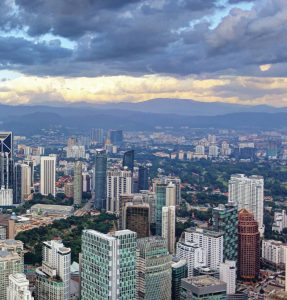
In light of less than favourable prevailing economic scenarios, which construction sector with a higher development budget do you foresee will be made to cut back to compensate other sectors?
KA: Budget cuts were made in January this year in response to falling oil prices. The government has so far said it will continue with high-impact projects that will bring direct and indirect benefits to Malaysians. We foresee that infrastructure projects will continue as planned. In addition, the government has reaffirmed that it will continue spending on the Pan-Borneo Highway and Vision Valley projects. In view of this, the construction sector will not be adversely affected. However, the falling ringgit will translate to higher construction costs, which may be passed on to consumers.
FCL: We hope there will be no cutbacks in the construction industry as most of the major projects planned have secured the necessary funding, and the infrastructure sector will continue to drive growth as the construction industry really needs the momentum of growth to be maintained.
AFZ: We are not estimating any cutbacks for construction expenditure as the government will be more focused to roll out projects under the 11th/10th Malaysia Plan and ETP/GTP3.0, which run from 2016-2020. This is evident from the LRT3 project roll-out and RAPID project in Pengerang, which is slated to be operational in 2019.
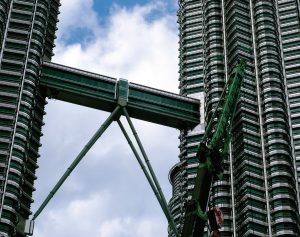
Despite underlying positive currents maintained by some research houses, how will present market sentiment weigh in on purportedly doubledigit growth in the months ahead?
KA: Malaysia is facing a challenging market right now. The combination of the ongoing political developments surrounding the 1MDB saga, falling ringgit and oil prices, as well as tighter lending by Bank Negara has resulted in a perfect storm brewing for the Malaysian economy. Investor confidence, in particular, has been hurt by the 1MDB investigations currently ongoing in Singapore, Hong Kong, US and Switzerland. In view of this, doubledigit growth seems unlikely. Then again, our specialty is not in economics, so we feel that this is best left to the experts to comment. Moving forward, the property and construction sectors will be affected. The good market to focus on is the affordable and mass market home segments as there is pent-up demand for this sector.
FCL: We still hope that the industry is on target to reach 8.4 percent growth for 2016, as projected in Budget 2016 speech by the Prime Minister. As mentioned in the second quarter, we hope that the infrastructure sector will continue to drive growth in the Malaysian construction industry.
AFZ: Intermittent cyclical pullbacks affecting the market will not affect construction companies with strong fundamentals. Currently, the median PER of KL Construction Index is 16.3x, which is below the broad FTSE Bursa Malaysia Kuala Lumpur Composite Index (FBMKLCI) of 18x PER.

Will significant retracement in low crude oil prices be expected to cap ongoing and planned execution of government programmes and policies in Budget 2016, since the bulk of government expenditure will be severely curtailed?
KA: When Budget 2016 was first tabled in October 2015, it was based on oil prices of around USD48 a barrel. However as of January, we have seen a decline in oil prices, hovering at around USD30 per barrel. This had caused the Malaysian government to act accordingly as it stands to lose around RM300 million for every USD1 drop in oil prices. So far, the government has cut down on spending expenditures for civil servants when travelling overseas, but continued with the various infrastructure projects as mentioned. The only sector that we have already seen budget cuts is education. The construction sector, especially for the infrastructure projects, will not be affected.
FCL: Yes, new projects by the government may be affected by the cut in oil prices. However, most planned projects have secured funding and this will mitigate the slowdown situation. This is a good question, but perhaps it can be fielded to the government as the construction industry would like to see continued growth. It is conceded that we need committed government projects to proceed as planned, so that the capacity and capability of the Malaysian construction industry can be nurtured.
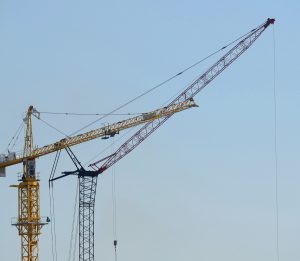
The Construction Industry Transformation Programme (CITP) was initiated by the Construction Industry Development Board (CIDB) as effort multipliers to increase productivity aided by modernisation of technology. What is your professional take on this from the general market acceptance to embrace the streamlining of construction efforts thus far?
KA: We welcome this initiative as it will lower construction costs and result in cost savings for businesses and consumers. The construction industry is already facing various challenges, such as the falling ringgit, resulting in higher construction costs and curbs in hiring foreign workers. In particular, the issue on curbs in hiring foreign workers will have positive and negative repercussions. The upside would be that it creates demand for local workers, giving a boost to the otherwise quiet property market. This would result in job creation and create a spillover effect in other related industries such as retail, spending, etc. Hence, the money that is spent on hiring locals will go around within the local economy. The downside would be an increase in property development costs as it is more expensive to employ local workers. This would result in higher construction costs and higher per-square-foot pricing for properties. So the CITP is something that will help mitigate rising construction costs.
FCL: CIDB, MBAM and other members of the construction industry have had regular meeting discussions to provide input to develop CITP. As such, MBAM members are aware of the key objectives of CITP. In fact, MBAM is represented in almost all the committees, from Initiative Working Group and CITP Thrust Working Group up to Ministerial Committee. In addition, we have specially created a committee in MBAM to monitor and keep track of the progress of CITP and disseminate information to our members.
What ongoing and foreseeable measures can be implemented to mitigate or remedy undesirable effects prevalent in the housing property market affected by a pessimistic first quarter in 2016 that could lead to a rebound or uptrend in subsequent quarters?
KA: REHDA can only recommend measures to the state and federal governments. Ultimately, it is the state and federal governments who can implement policies in the property market. There will unlikely be any new revisions in the minimum purchase price requirements for foreign buyers, the Real Property Gains Tax and so on. For this year, the focus for both the state and federal governments will be affordable homes for Malaysians. Foreign buying will also be subdued.
FCL: The reality is that the current stringent lending rules should be relaxed, especially for first-time house buyers. Developers should be encouraged to build more affordable houses to cater to this group. In addition, the government should provide developers with more incentives such as better plot ratios, lower capital contributions and soft loans to encourage developers to build more affordable houses and keep the momentum going.
AFZ: Rebound in earnings for companies under MIDF coverage would be positive for upcoming quarters as they were previously in the first quarter of the current fiscal year. There are recognition gaps from project awards and commencement. We will be able to see a clearer view from the third quarter of fiscal year 2016, when the recognition from this quarter ’s award starts to kick in (earnings accretion).
 KHALIL ADIS
KHALIL ADIS
FOUNDER, KHALIL ADIS CONSULTANCY PTE LTD
Khalil Adis was the former editor of Property Report and has written for PropertyGuru, iProperty.com, Yahoo! Singapore/Malaysia, The Malay Mail, Berita Harian, Real Estate Malaysia, Property Buyer and The Star, among others. He is a founder of Khalil Adis Consultancy, which presents a myriad of services that include property and market research, due diligence, editorial, content management and speaking engagements in the property market. Renowned for his independent views and insights on the property market, Adis is a highly sought-after speaker in Malaysia and Singapore. He has given talks at various expos and property launches. He is also on the judging panel of the South East Asia Property Awards (Malaysia). Property Buying for Gen Y is his second book, after the bestselling Get It Right Iskandar.
 FOO CHEK LEE
FOO CHEK LEE
PRESIDENT, MASTER BUILDERS ASSOCIATION MALAYSIA (MBAM)
Foo Chek Lee is the Managing Director of Pembinaan Mitrajaya Sdn Bhd. He has more than 37 years of experience in the construction industry, servicing both the public and private sectors. He is actively involved in the Master Builders Association Malaysia (MBAM) as the Chairman of Safety and Health Committee, a post he has held since 1999. Currently, he is the President of MBAM for the term from 2016 to 2018. He is a director in NIOSH Certification Sdn Bhd, a subsidiary of the National Institute of Occupational Safety and Health (NIOSH). He is one of the members for both the Thrust working group and the Initiative working group under the Construction Industry Transformation Programme (CITP). He also serves in various capacities on matters related to health and safety in the Department of Occupational Safety and Health (DOSH) and Construction Industry Development Board (CIDB) working committees.
 ABDUL FADHLI ZIL IKRAM BIN DZULKIFLY
ABDUL FADHLI ZIL IKRAM BIN DZULKIFLY
INVESTMENT ANALYST (CONSTRUCTION AND BUILDING MATERIALS), MIDF AMANAH INVESTMENT BANK BERHAD
Abdul Fadhli Zil Ikram Bin Dzulkifly graduated with a Bachelor of Legal Studies (Hons) and postgraduate diploma in Syariah Law and Practice from Universiti Teknologi MARA (UiTM). He holds an advanced diploma in Management Accounting from Chartered Institute of Management Accountants, United Kingdom. He qualifies as a Certified Public Accountant and holds a Capital Markets Representative License (Investment Advisory) from Securities Commission, Malaysia. He has served as the Head of Institutional and Shariah Dealings in Jupiter Securities and Head of Infrastructure Investment and Finance in Georgetown Capital Partners LLP in Maldives and United Kingdom. Currently, he serves as an investment analyst (construction and building materials) in MIDF Amanah Investment Bank Berhad.





